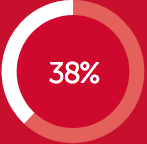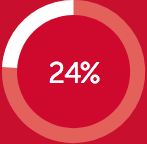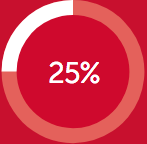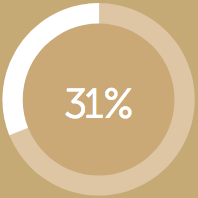Keeping things simple: Competing for brand loyalty in a seamless world
As the old adage goes, “the customer is always right.” Today, this tried-and-true notion finds new meaning as consumer demands for instant access to brands, products and information drive business decisions. And as the traditional barriers between consumers and businesses erode and blur, it becomes increasingly difficult to make sense of the challenges facing brands today. In this paper, you’ll learn about the changing consumer behaviors and demands that have shaped the market’s current state, how brands have reacted to the impactful changes of the day and a number of effective strategies for creating emotional connections with consumers in this new era of seamless business.
Consumer behaviors—most importantly, their purchasing decisions—have always been driven by choice. Today, there are more and better choices available than ever before, so consumers have almost unlimited options in front of them. That means that brand owners are tasked with making the choices simple—so simple, in fact, that the alternatives seem to disappear entirely. To do it, they’re focusing on the customer experience and consumers’ desires for convenience and quality to make their choice as simple as possible.
But that is no easy task. Twenty years ago, a consumer’s association with a brand was defined by their in-store experience, advertisements and influential media or maybe what they had heard about the brand from friends and neighbors. Today’s consumers don’t just shop in physical stores—they browse and shop online, visiting any number of retailer and e-tailer sites before making a decision. They peruse consumer reviews, check social media feedback and bargain hunt with third-party vendors. This is what has come to be known as the “omni-channel.” It’s a barrier-less world in which in-store and online experiences must provide the same seamless experience to deliver on customers’ expectations.
The notion of a seamless experience may seem like a simple one—and that’s the point—but creating one is a little more complicated. Seamlessness, as we define it in the context of consumer and brand interactions, refers to both technology and behavior. To start, tech features must integrate seamlessly to allow consumers to act without realizing the work brands are doing behind the scenes. Different people use technology in different ways, but when each iteration and use creates the same easy experience, we can call it seamless.
Top 5 online services most likely to influence a purchase1
Percentage of respondents influenced by:
1. Retail sites: 56%
2. Brand sites: 34%
3. Facebook: 31%
4. Blogs: 31%
5. Groups/forums: 28%
Today, consumers expect to find all the information they want and need, and they expect to find it instantly.
Take a classic example, one we’ve all likely experienced. You’re in a department store searching for a shirt, but when you find the one you want, the size you need is missing. It’s a seemingly inconsequential moment, but the store is about to lose out on converting you to a customer—a definite loss given your purchase intent. Luckily for the brand, a chipper salesperson is readily available with iPad-in-hand to find the shirt on the store’s e-commerce website, complete your transaction and have it shipped to you for free as a token of gratitude for your patience. Because the brand owner has complete inventory visibility—whether the product is in a warehouse, another store or wherever it may be—they are able to meet your needs. You get exactly what you want, when you want it—all without leaving the store. And that convenience means you never have to consider looking elsewhere for the shirt. You’re a happy customer and, in the eyes of the business, a completed sale.
With each new instance like this, consumers develop expectations of the brands and businesses with which they interact—and that creates new demands for how brands should behave. Businesses have always worked to adapt to consumer demands, but the difference that now sets successful businesses apart isn’t only the service or the product provided.
Today, consumers expect to find all the information they want and need, and they expect to find it instantly. Not just product features, but sale information, available options, coordinating products, purchasing locations, customer reviews—a whole range. And with the added transparency that Google and other search tools provide, consumers expect that it will be readily available. McKinsey reports that it has become increasingly important for retailers to “offer deep product expertise…in an environment that is increasingly experiential.”2 When a brand can push out the information that customers ask for in an engaging and compelling way, it can exceed expectations and add value throughout the purchasing process.
Top 10 US consumers’ biggest purchase influencers3
% of US consumers aged 14+, when asked to what degree the following influence their buying decisions in 2013
- Recommendations from a friend/family/known acquaintance: 44% High influence, 42% Medium influence
- Television ads: 20% High influence, 51% Medium influence
- Online review or recommendation from someone within your social media circle: 22% High influence, 46% Medium influence
- Online review by someone you do not know in real life: 14% High influence, 46% Medium influence
- Reseller or channel partner website: 13% High influence, 44% Medium influence
- Magazine ads: 10% High influence, 47% Medium influence
- Products or services mentioned/featured in a TV show or movie: 12% High influence, 43% Medium influence
- Manufacturer or vendor website: 12% High influence, 42% Medium influence
- Newspaper ads: 10% High influence, 41% Medium influence
- Email from a company/brand: 10% High influence, 38% Medium influence
The value added by and associated with the brand is now one of the greatest forms of differentiation. Consumers want instant access to information—so give it to them. The brand that provides a seamless experience for consumers that simplifies their decisions can create emotional connections to build loyalty and make that brand the easy—and effectively only—choice.
The omni-channel world as we know it today has developed over time through the natural adaptations of classic business and consumer behaviors, as well as technological advancements: consumers need and want products and services, and brands determine how to meet those needs in new and innovative ways. But while brands and manufacturers used to have control of the information about those products and services, this integral relationship has changed. Where a brand could once push out information claiming that, say, their product is especially durable, crowd-sourced online consumer reviews can now disprove (or, ideally, confirm) such claims. The result? A staggering increase in the significance of consumer-driven, consumer-filtered information when it comes to making purchasing decisions.
As the kind of information consumers want has changed, so has the way they look for it. As a result, the way brands deliver it has changed, too. It’s now common practice for consumers to peruse multiple channels prior to making a purchase, whether they’re shopping in a store, online or on a mobile device. A BIA/Kelsey report suggests that 97 percent of consumers conduct online research when deciding to make a purchase.5 These once separate channels converge incredibly frequently, too. The ability to shop is now attached to consumers’ hands—an even more striking metaphor than “at their fingertips.” Searching for product information with a smartphone while shopping in a store is a standard scenario: a 2013 McKinsey survey found that nearly 50 percent of consumers who conduct research using mobile phones have used them while in stores6 (a similar Kobie report cites 52 percent).4 Traditional purchasing pipelines now intersect and swap around at a moment’s notice.
Consider an example. You’re shopping for headphones online. You have three windows open in your browser for three different retailers’ sites, and you’re comparing the same product across all three: Target offers you product reviews from customers, and you see 4½ stars across the board; Amazon offers a group of coordinating products that other people have purchased together; and Walmart gives you delivery or in-store pick-up options. What stands out? What’s being offered that fits with what you want—and expect—to know in order to make your decision?
This is what the current landscape looks like: brands are striving to provide their customers with easy access to the information they want. The challenge is now to differentiate one business, service and product from the wash of choices available to consumers.
Role of mobiles4
Top 4 ways consumers use their mobiles to make purchasing decisions.




Consumers who use their mobile to help with in-store decisions
Consumers who use their mobile to call a friend for purchase advice
Consumers who use their mobile to read product reviews
Consumers who use their mobile to compare prices at other retailers
A powerful brand adds value to consumers’ shopping experiences, providing a means to stand out as the clearest available choice. Maybe you know a lot about Amazon’s return policy and have had great experiences with its customer service department. An experience like this isn’t conveyed in the website search, but it is a part of your experience with the brand. When consumers know that a brand can provide them with the experience they want, each interaction builds trust and creates a reason to believe in the brand.
The goal for any brand should be to make their customer’s choice to purchase so simple that the customer doesn’t feel like he’s had to make one.
Let’s go back to the headphones search. You’re the kind of person who needs to hold a product before you buy it, so Walmart’s “find in store” feature hits on your needs. Plus, you’ve been in the store before and made purchases there, and you’ve always had great experiences with knowledgeable salespeople. Or, maybe you have a Walmart account and consistently choose the “find in store” option rather than ordering products for home delivery. Together, each of these points makes it easier to decide between Walmart and the other retailers—and they create a pattern of purchasing behavior that Walmart learns to recognize.
With each interaction and choice you make, you not only make your own associations with the brand but also give Walmart an idea of the kind of service you expect and the information you’ll want about their products. And that makes it easier for them to customize that information for you. This pattern is significant—so much so that businesses like Walmart are adapting their practices to meet their consumers’ wishes. In fact, 50% of Walmart’s online sales are picked up in stores.2
Regardless of what specific information resonates with a consumer, there’s a brand among the available options that will provide it—the brand that knows it’s what their customer wants. As companies continue to leverage consumer data to analyze behavior and reveal what information different consumers desire, it becomes easier to tailor-make an experience for their customers. And when you, the consumer, get the information you want before you have to ask for it, your experience goes above and beyond your expectations.
Learning what information consumers want and delivering it is only part of a brand’s responsibilities. To constantly reinforce the trust that a seamless experience can create, brands must deliver on the promise to their consumers by making everything work behind the scenes. Businesses must anticipate consumers’ need for information as well as products and services in order to deliver a seamless experience across a range of touchpoints. Never before has an organization needed to function as a well-oiled machine in order to deliver to its customers. But by doing so, they can engage consumers with relevant information in each interaction to provide simple experiences and build emotional connections.
“Positive customer experience emotions—encompassed in a feeling of trust—were the biggest drivers of satisfaction and loyalty in a majority of industries.”8
Consumer attitudes to personalized shopping experiences7



Believe personalization influences what they purchase to some extent
Of those who have experienced personalization are in favor of product recommendations based on previous purchases
Wish their shopping experience was more personalized than it currently is
Convenience is, by most measures, one of the most important drivers of conversion. The goal for any brand should be to make their customer’s choice to purchase so simple that the customer doesn’t feel like he’s had to make one. A curated selection of products based on previous purchases is an excellent example of putting this into practice, as is our original scenario with the shirt. It’s all a matter of making things easy.
But this draws attention to an important issue. Because consumers take many paths to a purchase utilizing multiple channels (often all at the same time), maintaining a consistent brand experience across each of them becomes an essential component of delivering on consumers’ expectations. As McKinsey notes, “positive customer experience emotions—encompassed in a feeling of trust—were the biggest drivers of satisfaction and loyalty in a majority of industries.”8 If the in-store and online experiences differ in ways that don’t add value, customers will move elsewhere—and a single negative experience has four to five times greater relative impact than a positive one.8
As the wealth of information associated with these experiences—and the products at their core—continues to grow, the kind of information may very well become increasingly important, too. Take for example sourcing and production information for a pair of shoes. Where did the resources come from? Is the cotton sustainable? Were they produced in an ethical factory? Regardless of how information like this becomes a part of a broader conversation, that conversation becomes a part of the brand. And only time will tell what form that will take.
The more consistently a brand delivers to its customers, the more engaged those customers will be. This goes beyond the purchasing pipeline to encompass the whole range of potential interactions between consumer and brand, and each one needs to add value while keeping customers interested. Incorporating new features is a great example, and many brands are adding new ways to purchase, philanthropic options or new conveniences that give appealing dimension to brands. Take Warby Parker’s eyeglass donations or Amazon’s Amex rewards point integration. More than just shiny and new, these aspects of purchasing from these brands make things easier for customers to have a good experience. Convenience, ease-of-use and intuitiveness are still the keys to continued positive interactions that create credibility and translate into brand loyalty.
Credibility and loyalty are essential to keeping a brand not only relevant but appealing as well. By enabling positive interactions that anticipate customers’ needs and exceed their expectations, brands can create emotional connections that engage their audience—the essential foundation for a strong relationship. It’s an evolving challenge, but with the right strategic direction, carefully crafted communications and a compelling brand image, delivering a seamless customer experience will become the new standard for business.
Selected sources
1. “2013 digital influence report.” Technorati Media.
2. Ian MacKenzie, Chris Meyer and Steve Noble. “How retailers can keep up with consumers.” McKinsey & Company. October 2013.
3. “Digital democracy survey: A multi-generational view of consumer technology, media and telecom trends.” Deloitte. 2014.
4. Jenn James. “[Infographic] Omnichannel loyalty: The new customer connection.” Kobie Marketing. January 2013. https://kobie.com/omnichannel-loyalty-infographic/
5. BIA/Kelsey. “Nearly all consumers (97%) now use online media to shop locally, according to BIA/Kelsey and ConStat” [press release]. March 2010. Retrieved from http://www.biakelsey.com/company/press-releases/100310-nearly-all-consumers-now-use-online-media-to-shop-locally.asp
6. Ewan Duncan, Eric Hazan and Kevin Roche, “Developing a fine-grained look at how digital consumers behave.” McKinsey & Company. July 2013.
7. “Rethinking retail: Insights from consumers and retailers into an omni-channel shopping experience.” Infosys. 2013.
8. Alfonso Pulido, Dorian Stone and John Strevel. “The three Cs of customer satisfaction: Consistency, consistency, consistency.” McKinsey & Company. March 2014.
